A negotiable bill of Lading (BOL) is very important in international trade and shipping. This legal document has the roles of receipt, contract and title rolled into one. Everyone in the world of trade, including small companies and large importers and exporters, needs to know about the BOL.
Globally, the BOL overcomes issues between the parties involved, shippers, carriers and consignees so that goods can be sent safely across borders through legal channels. No matter if you are shipping cargo by air, sea or train, the BOL is always considered a necessary part of your documents.
Understanding the Bill of Lading: Definition and Core Purpose
To confirm that they have received goods for shipping, carriers create and issue Bill of Lading documents. There are three important roles of this document that explain why it is necessary for worldwide trade. Most importantly, it becomes a proof that the carrier is holding your goods as stated in the bills. Next, it basically serves as a contract which details the agreement for moving the goods. Lastly, it proves legal title and ownership of the goods which can be confirmed with the document.
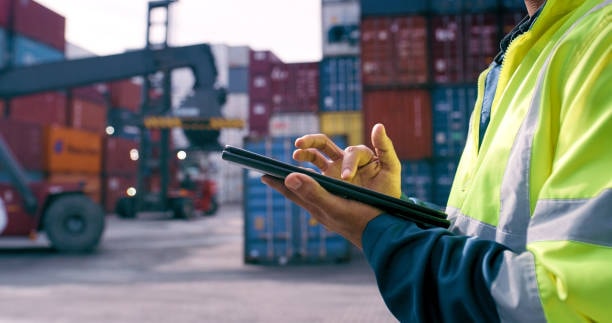
The information in the BOL explains the type and amount of goods, how they are when received, the names of the shipper and consignee and where the goods are going. Thorough documentation enables all people involved in the shipping to know exactly what is being shipped and their job in the process.
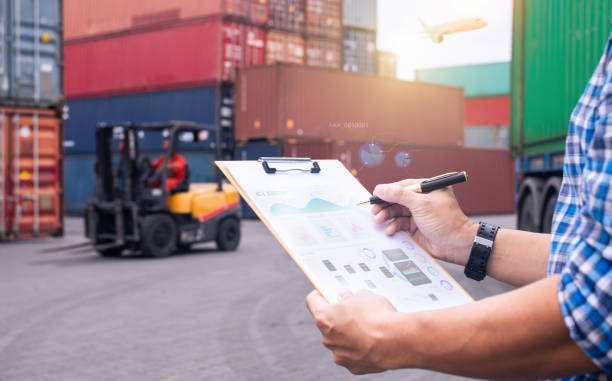
The BOL gives international express and courier companies the regulations needed to protect everyone involved. It shows who is liable if something goes wrong and it proves that an agreement exists between the parties.
Different Types of Bills of Lading in International Shipping

Several different types of Bills of Lading are defined by the shipping industry and they each have their own use and fit various scenarios. A Straight Bill of Lading, also called a non negotiable bill of Lading, is only able to be assigned to a specific party and cannot be given to anyone else. The purpose of this type is to allow the shipper to decide which people handle or receive the goods.
An Order Bill of Lading or negotiable BOL, may be passed from one person to another by signing an endorsement. That’s why it is used so often in global trade, where buyers and sellers trade negotiable bills and products while they are still moving. With a bearer BOL, whoever receives the document can pick up the goods which is the most versatile approach, but comes with the biggest risk.
The document called an Ocean Bill of Lading is created for sending goods by sea and covers terms and rules meant for maritime shipments. Air freight uses Air Waybills the same way as Bills of Lading but they differ in that they are not negotiable. Companies that avail themselves of customs clearance and warehousing services need to know about the different document types to handle each shipment properly.
When shipping products using more than one way like sea freight and trucking or rail, Multimodal Bills of Lading are used. Such containers are especially significant for China-Europe railway transport along with additional shipping.
Key Components and Information Found in a BOL
By listing important details in a Bill of Lading, proper treatment and delivery of goods are made more likely. Information about the shipper includes their full name, shipping address and quantity of goods along with all contact options. The consignee shares the receiving information and the notify party provides the details of people who need to be told upon arrival of the goods.

This part describes in detail the goods going to be shipped, along with their important features, like their nature, the amount, their weight and their size. It allows customs to approve the shipment and for the carrier to pick the suitable way to handle it. A number or symbol found on a shipment’s package is shown here and makes it easier to track and find.

Stating where the goods will be loaded and where they will be unloaded is important. The details from FBA Uni provide support for sending items to the proper fulfillment centers. The freight and charges section states who will be responsible for different shipping fees, while the terms and conditions section explains the system of laws for guiding the shipment three main functions.
Legal Significance and Implications of Bills of Lading

In the world of international trade, the Bill of Lading holds value as a key document , acting as solid proof of the contract and the receiving of goods. Courts across the globe view BOLs as official documents which is why they play a key role in settling arguments in the shipping industry.

To decide who is liable and how much should be paid after items are lost or damaged en route, the BOL acts as the main record. In most BOLs, you will find that the company has limits on how much it agrees to pay in case something happens; however, shippers also have means to seek redress if something goes wrong.

Since some BOLs are negotiable, this can cause more legal issues since ownership of the goods can be transferred by means of the document. Since they are classified as BOLs, they can be offered as security for loans or offered for sale to others. In many cases, banks include BOLs in letters of credit which proves their legal role telex release accurately completed.

A good knowledge of BOL rules is necessary for a transportation company and supply chain solutions provider to offer complete services to their clients named consignee. Managing and handling these documents right can stop legal issues and let international transactions go smoothly without complications.
The Role of BOL in International Trade Documentation
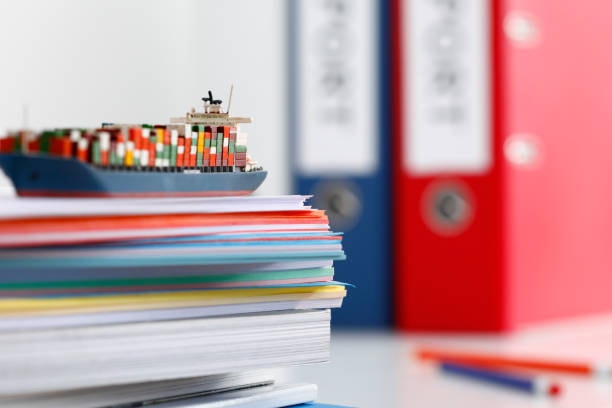
The Bill of Lading is used together with key papers in international trade which include commercial invoices lading important, packing lists and certificates of origin goods shipped. The documentation makes sure that goods can cross international borders following the necessary rules transfer title.

The BOL helps ensure a letter of credit process by instructing banks to verify certain information before making the payment to exporters. Accuracy and care should be emphasized because the document must not vary from what is stated in the letter of credit two documents.
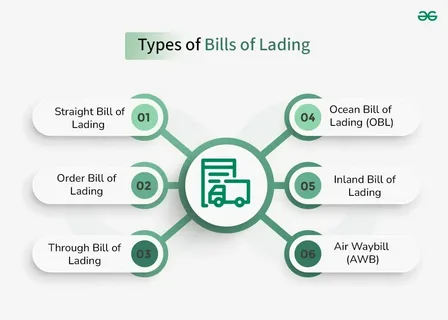
A seaway consignment code gives companies the necessary documentation to pass through customs. The customs officials rely on the BOL to check the reliability of other documents and confirm that all shipments are handled according to the regulations.
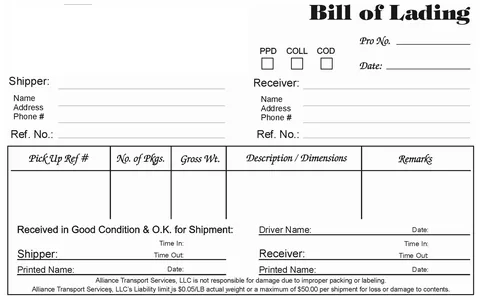
By embracing modern logistics systems, an electronic bill of Lading can be easily handled, providing equivalent legal status as paper options and ensuring better and faster processing without additional costs shipped goods.
Electronic vs. Paper Bills of Lading: Modern Developments
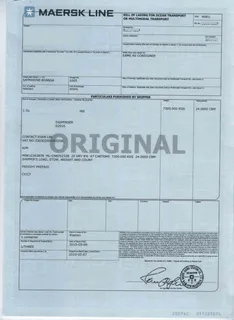
More and more, the shipping industry is using electronic Bills of Lading because they are quicker and more reliable than paper ones order bills. Because of fastest processing times, lower expenses and better security, electronic BOLs offer numerous benefits lading issued.
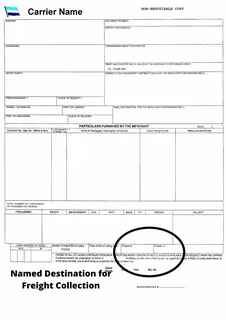
At the same time, using electronic BOLs encounters problems with acceptance by law and uniformity in various regions transfer ownership. Even though electronic BOLs are recognized by several countries, a few locations are still obliged to conduct these trades on paper carriage contract main functions.
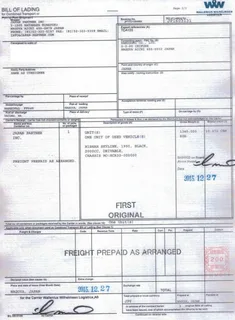
Electronic BOLs are made and handled more efficiently with the support of blockchain technology nonnegotiable bill. Using this technology, transactions are permanently recorded and certain obligations set by a contract are carried out automatically when certain conditions occur freight forwarder.
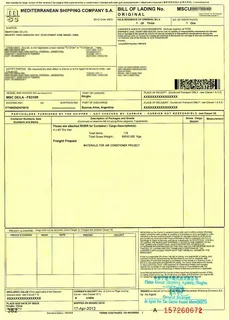
International freight forwarding companies benefit from offering customers paper and electronic Booking Orders which allows them to match each client’s needs and the different rules of each country. If trade routes and involved nations differ, as well as the preferences of those taking part, then paper or electronic BOLs will be chosen.
Common Challenges and Solutions in BOL Management
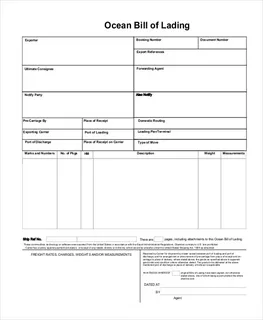
Proper management of Bills of Lading involves proper attention and knowledge of the shipping process and what can result in delays or arguments. Quite often, there are differences between what the BOL says and what other documents mention and this may lead to difficulties in customs and letter of credit handling both the shipper.
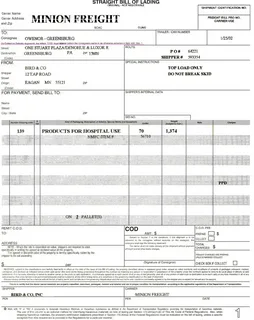
A common problem is if the original bill of Lading is not provided on time at the destination port which leads to extra iron anniversary fees and delays in getting cargo released. Many companies that move goods are now choosing to place their BOLs electronically or to use courier companies for fast document delivery shipping line.
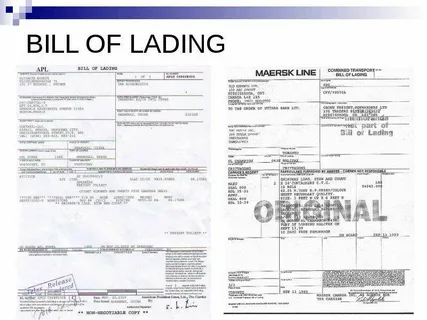
When BOLs include wrong or missing information, it can result in customs delays as well as rejected letters of credit transport company. To reduce these risks, make sure to deploy strong quality control guidelines and recruit skilled individuals in logistics sea waybill.
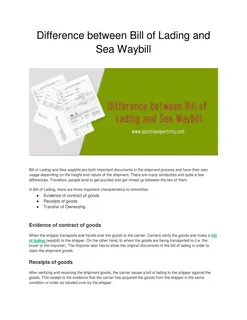
The rules of international shipping are not the same in all countries, so the requirements for BOLs may change accordingly. Freight forwarders with expertise in these matters can help you handle the process correctly and steer clear of mistakes bill negotiable.
Conclusion
International shipping and trade rely heavily on the Bill of Lading which plays many key roles in helping commerce flow across the globe. Since it acts as a receipt, contract and title, bills of lading cannot be overlooked by anyone involved in cross-border business.
Everyone in a global supply chain must be familiar with different BOLs, their regulations and how to manage them well. As the field of shipping changes and adopts new technologies, the significance of the BOL for safe, legal and organized transportation across borders is still the same.


Thank you for reading!
Have questions, corrections, or better ideas? We’d love to hear from you!
We value every piece of feedback and promise to reply within 24 hours. Let's make this guide better together!
Note: Spam comments will not be published.